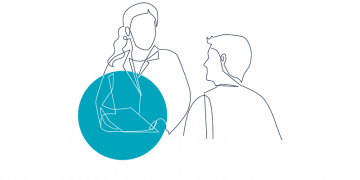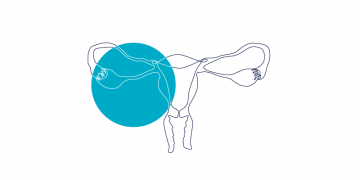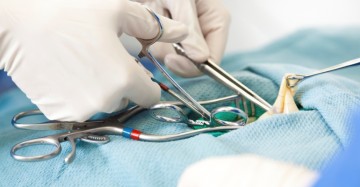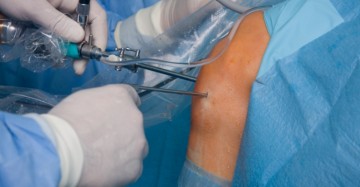By Dr. Katelyn Halpape on March 26, 2025
One in five Canadians live with chronic non-cancer pain (CNCP). Due to the historical role opioids had as a key component of CNCP treatment, a number of patients living with CNCP are on long-term opioid therapy (LTOT). I discuss the off-label use of buprenorphine/naloxone as a distinctive treatment option for CNCP and LTOT.
By Dr. Mark Adrian on April 19, 2023
Degenerative lumbar spinal stenosis refers to the narrowing of the spinal canal that can result in numbness, pain, and weakness of the lower extremities. Atypical presentations are common as are competing diagnoses. Top practice tips: distinguish the source of the symptoms, rule out competing disorders, send for imaging, encourage exercises that place the patient in a flexed position, and consider gabapentin, epidural steroid injections, and a referral for a surgical opinion.
By Dr. John van Bockxmeer, Dr. Vishal Varshney, and Anthony Lau, PharmD on February 15, 2023
I incorporate this ‘NSAID ceiling’ into my prescribing practice for anti-inflammatory medications. I typically prescribe maximum doses of 400 mg oral ibuprofen TID with meals and 10 mg intramuscular ketorolac. I counsel my patients to limit their NSAID use to a 5-day window when possible and encourage other non-pharmacological and multimodal analgesia.
By Dr. Arman Abdalkhani on July 15, 2022
Otolaryngologists receive many referrals for what is classified as Eustachian Tube Dysfunction, aural fullness, and subjective hearing loss. Practitioners frequently encounter ear fullness or subjective hearing loss, in the face of an otherwise normal exam. It may lead practitioners to “read into” their physical exam with abnormal tympanic membrane (TM) findings.
By Dr. Colleen Dy, Zerlyn Lee, and Adrienne Sim on April 7, 2021
Individuals with Chronic Pelvic Pain (CPP) often experience disruptions in multiple aspects of their reproductive health care. Routine pelvic examinations often become extremely challenging due to pain.
By Dr. Muxin (Max) Sun on March 6, 2019
I have decreased my frequency of giving steroid injections for decreasing pain of osteoarthritic knees. I educate patients on evidence, placebo effects and risks. I recommend less invasive therapies including physiotherapy, exercise (quadriceps and hip abductor strengthening, Tai Chi), hot compress, antiinflammatory creams, weight loss, TENS machine, orthopedic & orthotic devices, etc.
By Dr. Kevin Fairbairn on April 13, 2016
Appendicitis can often present itself in the black box of abdominal pain. Fortunately at times the history and physical can give practitioners a clear window, straight through the fascia, to an unhappy appendix.
By Dr. Ric Arseneau on October 13, 2015
Fatigue, pain, and unexplained symptoms are commonly seen in physician offices, however they are often experienced as “unsatisfying” for doctors. Our patients need an explanatory model to help them understand their illness. If we don’t provide one, patients will create their own or seek one elsewhere.
By Dr. Karen Nordahl on September 30, 2015
It has been shown that 55% of pregnant patients reported some form of back pain during their pregnancy when questioned. Studies have demonstrated that if we get pregnant women moving, specifically working their pelvic floor with Kegel exercises and their ‘core’ they may have better pregnancy outcomes.
By Dr. Catherine Allaire on September 2, 2015
Endometriosis is a very common condition affecting an estimated 10% of women of reproductive age. Severe dysmenorrhea is the most common symptom of endometriosis and the earliest one to occur.
By Dr. Stan Lubin on August 2, 2014
In the 1970’s if you had a suggestive history, physical exam, and no osteoarthritis you would probably have a complete meniscectomy. Often the knee pain persisted postoperatively. Then complete meniscectomy was shown to be associated with a significantly increased risk of osteoarthritis.
By Dr. Pam Squire on June 9, 2014
Many people mistake the pain of withdrawal as their usual pain and assume their pain improved because the opioid was relieving their pain, when it was more often just relieving the pain associated with the induced withdrawal.
By Dr. Andrew Howard on September 10, 2013
Somatoform and conversion disorders are common psychiatric presentations in general practice. When chronic, like most psychiatric conditions, they commonly cause leave from work, poor quality of life for patients and supports, and heavy burden on medical practices.
By Dr. Rosemary Basson on June 10, 2013
How to manage PVD is an extremely common question. PVD affects 12 -15 % women most of whom are relatively young. The common co-morbidity of PVD strongly supports a chronic pain approach.
By Dr. Launette Rieb on September 12, 2011
It is worth considering OIPS in the differential diagnosis when pain appears to be spreading, especially when features of allodynia and hyperalgesia are present.














Recent Comments